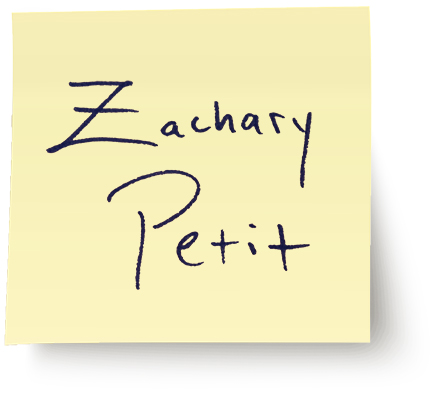For me, there’s always a hidden layer behind each issue of a magazine. An unspoken theme that lurks just below the one we’ve loudly called out on the cover. One that we don’t discover until the issue is complete, and the unintended parallels begin to slowly make themselves known. This might be considered apophenia—the spotting of patterns that occur randomly through a batch of accumulated data or, more specifically in our case, a bound collection of words and images.
Sometimes I can find the hidden layer, and sometimes I can’t quite put my finger on it. But in this issue, I believe I have: Evolution.
In our careers (and, for that matter, our lives), we tend to seal ourselves into boxes of our own meticulous design. Whatever we signed up for in college generally dictates our first career move, which then dictates our next career move, and whatever snappy descriptor we put in our Twitter bio often serves as a mini epitaph on our creativity, a last word on who we are and what we can become.
Granted, we like labels. They help others sort us out, and determine how we can be of use to them. We like to pretend that there’s a method to all this madness surrounding our talents and identities. We create systems so that we have the illusion that we can really be summed up in a single sentence. But sometimes we have to tear the labels off to find something new. Like a Band-Aid, it can hurt. But when we learn to sit and truly bask in the chaos and see it for what it is—empowerment—that’s where the strange and wonderful brews. That, often, is how we evolve. And evolution, as in science, is how we progress.
Paul Rand (page 36) didn’t accept that there was only one artistic path.
Nor does Frank Chimero (page 46).
Nor do Michael Vanderbyl and Sean Adams (page 99), and the brilliant New Visual Artists throughout this issue (page 53).
Nor do I.
Moreover, one thing I love about evolution: It often arises from dialogue. For me, the best part of PRINT has always been the voices, like Tibor Kalman and the rest of the great designers over the magazine’s 75 years, who never accepted one path, never accepted one solution or idea as the final word. As I’ve written in these pages before, dialogue—a clashing of ideas, a clashing of minds, whether internal or external—is where I believe the exciting things really happen. (Admittedly, we’re more subtle about it in some issues than in others—sure, James Victore takes a gas can and some matches to the dialogue of design education in our new Manifesto section on page 85, but on a more meta level, in this volume the NVAs tell their own stories in their own voices via questionnaires … and then Rick Poynor eviscerates the Q&A form on page 97.)
Without dialogue, we’re all just making pretty things and nodding our heads in agreement. And while making pretty things is great and agreeing is easy, design, as those in the field know, can—and in my opinion, should—be so much more than that. If anything, dialogue can become the soil for the seeds of our own evolution, a means of opening up new quadrants of our brains and, subsequently, our careers.
Of course, there is a downside to this whole evolution thing—crawling out of the womb-like primordial ooze and onto new ground can be terrifying. Why? It’s visceral, and simple: We don’t want to fail.
But failure, without having to quote Samuel Beckett, is fine, too.
In Japan, you’ll find an artform called Kintsugi, in which broken pottery is fixed with visible veins of gold. The underlying philosophy: Being broken is a part of the narrative history of an object—not a reason to discard it or covertly glue it back together.
Or perhaps Victore puts it best on page 88: “My best students have always been the ones who failed some other course of study or life choice—because they carry with them the fire of that experience.”
We’re real. We’re here, and we’re trying to create. We’re vulnerable. And I love that.
What will we all make tomorrow?
That’s why I get up in the morning: You never know.





